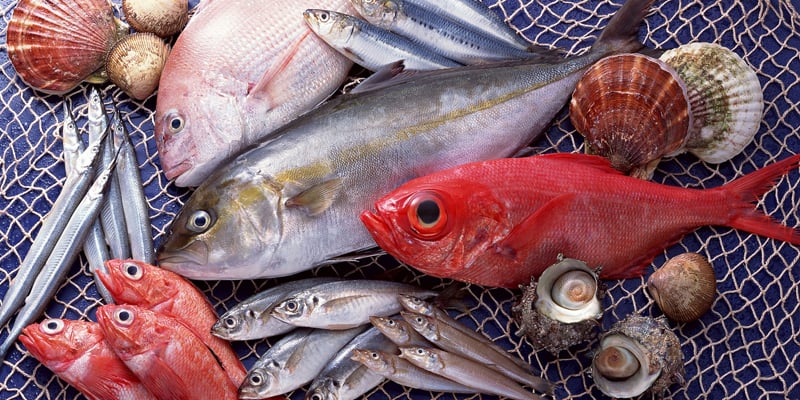The following are the three types of fish with a high risk of mercury contamination that you should avoid, especially if you are pregnant, a child, or have a weakened immune system:
King Mackerel
King mackerel is at the top of the food chain, accumulating mercury from smaller fish. According to nutrition experts, it contains 0.73 ppm of mercury, the highest level among marine fish. Pregnant women and children under 6 years old should avoid consuming this fish due to potential neurological impacts.
Safer alternative: Spanish mackerel (smaller mackerel) has lower mercury levels.

Swordfish
Swordfish is dangerous due to its long life span and large size, which can reach 3-4 meters. It accumulates high levels of mercury, and its meat is often consumed raw in sashimi, increasing the risk of exposure. Adults should consume this fish no more than once a month, and it should be completely avoided by children.
Safer alternative: Opt for wild salmon, which is lower in mercury and rich in omega-3.
Bigeye Tuna
Bigeye tuna is a large, long-lived species of tuna that accumulates mercury. It is commonly used for sushi and sashimi, and eating it raw increases mercury absorption. Canned tuna has lower mercury levels than fresh tuna. Pregnant women should limit their consumption to less than 170g per week.
Safer alternatives: Yellowfin tuna or salmon.
Groups That Should Completely Avoid These Three Types of Fish
According to nutrition experts, pregnant and lactating women and young children should refrain from consuming these fish. Additionally, it is recommended to eat fish with lower mercury levels, such as salmon, herring, sardines, and mackerel, 2-3 times per week.
For other marine fish, adults should limit their consumption to 300g per week, and children to 50-100g per week.
Ways to Reduce Mercury Intake When Eating Fish
– Avoid eating fish skin and fat, as mercury tends to accumulate in these parts.
– Thoroughly cook fish to reduce heavy metal content.
– Diversify your protein sources by combining fish with beans, chicken, and eggs.
Note: Fish remains an important source of nutrition, but it is crucial to be mindful of the potential risks associated with mercury contamination and take appropriate measures to minimize exposure.
7 Small But Mighty Fish That Are Rich in Omega-3s and Won’t Break the Bank
Small but mighty, these fish may be modest in size but they pack a powerful nutritional punch. Rich in omega-3 and other essential nutrients, they offer a healthy and affordable alternative to their larger counterparts. Size isn’t everything, and these little fish prove that good things come in small packages.






































